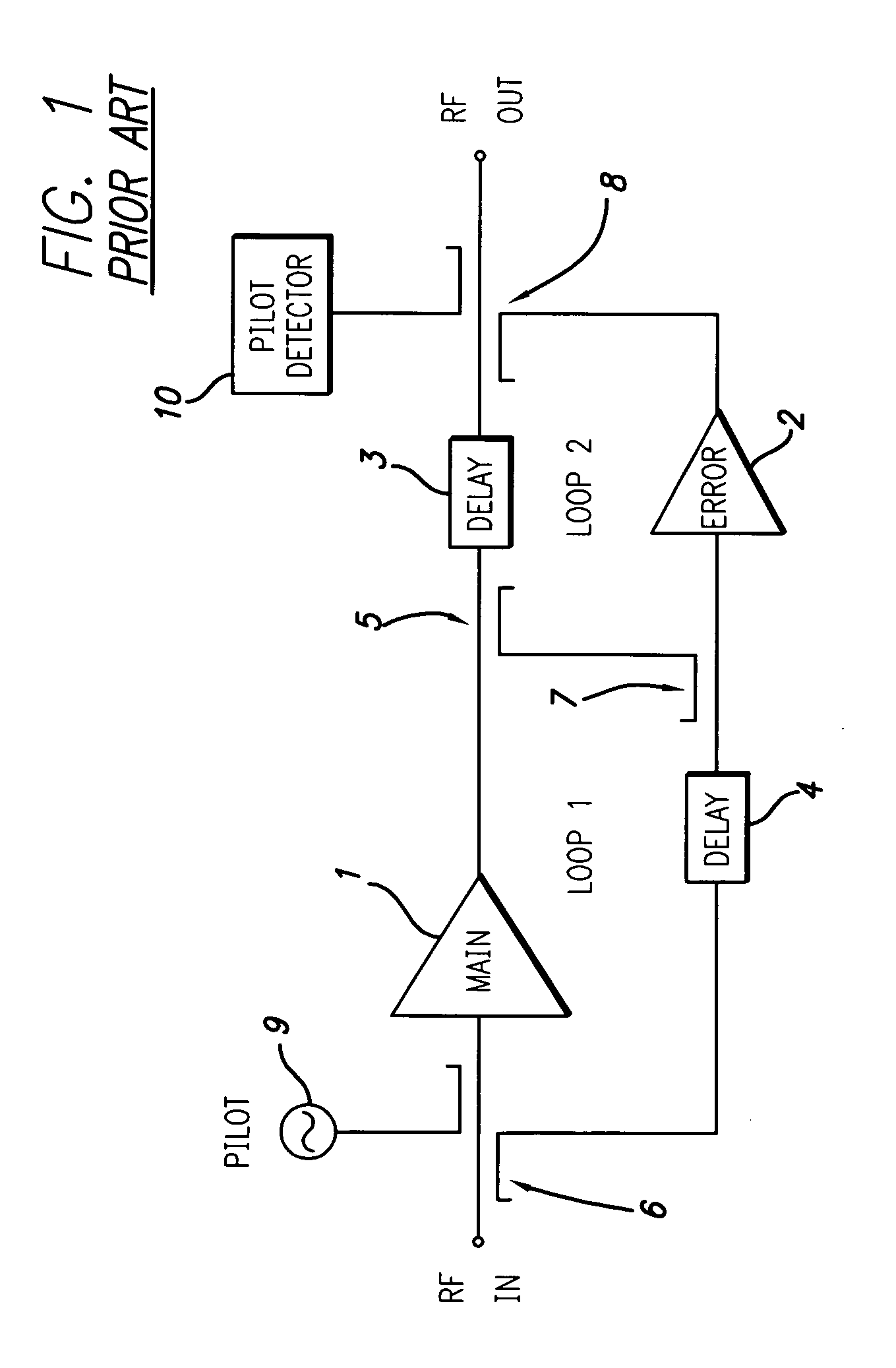Feed forward amplifier employing positive feedback pilot generation with automatic level control
a technology of automatic level control and pilot generation, which is applied in the direction of amplifiers, amplifiers with semiconductor devices/discharge tubes, amplifiers, etc., can solve the problems of increasing the difficulty of pilot power generation, increasing the cost, and consuming part of the rated power handling capability of main amplifiers, so as to reduce the level of the generated pilot signal
- Summary
- Abstract
- Description
- Claims
- Application Information
AI Technical Summary
Benefits of technology
Problems solved by technology
Method used
Image
Examples
Embodiment Construction
[0028] A feed forward amplifier in accordance with a preferred embodiment of the present invention is shown in FIG. 2 in a block schematic drawing. The feed forward amplifier employs a positive feedback pilot generation system, a preferred embodiment of which is shown in FIG. 3. The feed forward amplifier of the present invention may incorporate known features other than the novel aspects described in detail herein and such known features will not be described in detail. For example, additional features of a feed forward amplifier architecture and control system are described in U.S. patent application Ser. No. 10 / 365,111 filed Feb. 12, 2003, the disclosure of which is incorporated herein by reference in its entirety.
[0029] Referring to FIG. 2, the feed forward amplifier includes an input 12 which receives an input RF signal to be amplified and an output 14 which outputs the amplified RF signal. The RF signal may be a high bandwidth signal such as a CDMA (Code Division Multiple Acc...
PUM
 Login to View More
Login to View More Abstract
Description
Claims
Application Information
 Login to View More
Login to View More - R&D
- Intellectual Property
- Life Sciences
- Materials
- Tech Scout
- Unparalleled Data Quality
- Higher Quality Content
- 60% Fewer Hallucinations
Browse by: Latest US Patents, China's latest patents, Technical Efficacy Thesaurus, Application Domain, Technology Topic, Popular Technical Reports.
© 2025 PatSnap. All rights reserved.Legal|Privacy policy|Modern Slavery Act Transparency Statement|Sitemap|About US| Contact US: help@patsnap.com



